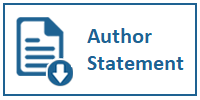Tantangan yang Harus Dihadapi Pimpinan Organisasi SI/TI di Indonesia Tahun 2014 - 2016
DOI:
https://doi.org/10.31937/si.v4i2.248Abstract
The job challenge of the leaders of the organization unit of IS / IT (CIO) has been shifted from the beginning as well as supporting routine tasks becomes more complex and varied that support decisionmaking at the levels of supervisors, middle managers and even top leaders. The problem is for years 2014-2016 and job description of IS/IT leaders have shifted towards a more strategic longer. Pervasive computing capability and versatility of use IS / IT ecofriendly has become a reasonable claim. So that why the organization unit of the IS / IT will be led by a CIO and must be assisted by the CTO, COO and CPO. Organizational units IS/IT is not something monolithic anymore but is a combination of four functions simultaneously, namely operating computerized systems, developing systems, designing architecture and is able to identify new business needs. Every function requires a certain membership groups and different management strategies. Oriented activities in support of strategic business more importantly needed by companies or government agencies. The method used in this research is the study of literature and interviews with respondents. The results of the research conducted is that the duties and functions in a variety of major government agencies appears to look uniform and can be interpreted broadly so that needs to be made more specific for the central leadership organization unit of IS/IT to answer the challenges of the future. While the CIO job description of some large-scale private enterprises is highly variable and depends on the ability of the top management and also the creativity of CIO. Considering year 2014 is no longer, then it should be the top management of private companies and government agencies begin to prepare.
Index Terms - Chief Information Officer, IS/IT organizational management strategy, job challenge
Downloads
Downloads
Published
How to Cite
Issue
Section
License
Authors retain copyright and grant the journal right of first publication with the work simultaneously licensed under a Creative Commons Attribution-ShareAlike International License (CC-BY-SA 4.0) that allows others to share the work with an acknowledgement of the work's authorship and initial publication in this journal.
Authors are able to enter into separate, additional contractual arrangements for the non-exclusive distribution of the journal's published version of the work (e.g., post it to an institutional repository or publish it in a book), with an acknowledgement of its initial publication in this journal.
Copyright without Restrictions
The journal allows the author(s) to hold the copyright without restrictions and will retain publishing rights without restrictions.
The submitted papers are assumed to contain no proprietary material unprotected by patent or patent application; responsibility for technical content and for protection of proprietary material rests solely with the author(s) and their organizations and is not the responsibility of the ULTIMA InfoSys or its Editorial Staff. The main (first/corresponding) author is responsible for ensuring that the article has been seen and approved by all the other authors. It is the responsibility of the author to obtain all necessary copyright release permissions for the use of any copyrighted materials in the manuscript prior to the submission.














